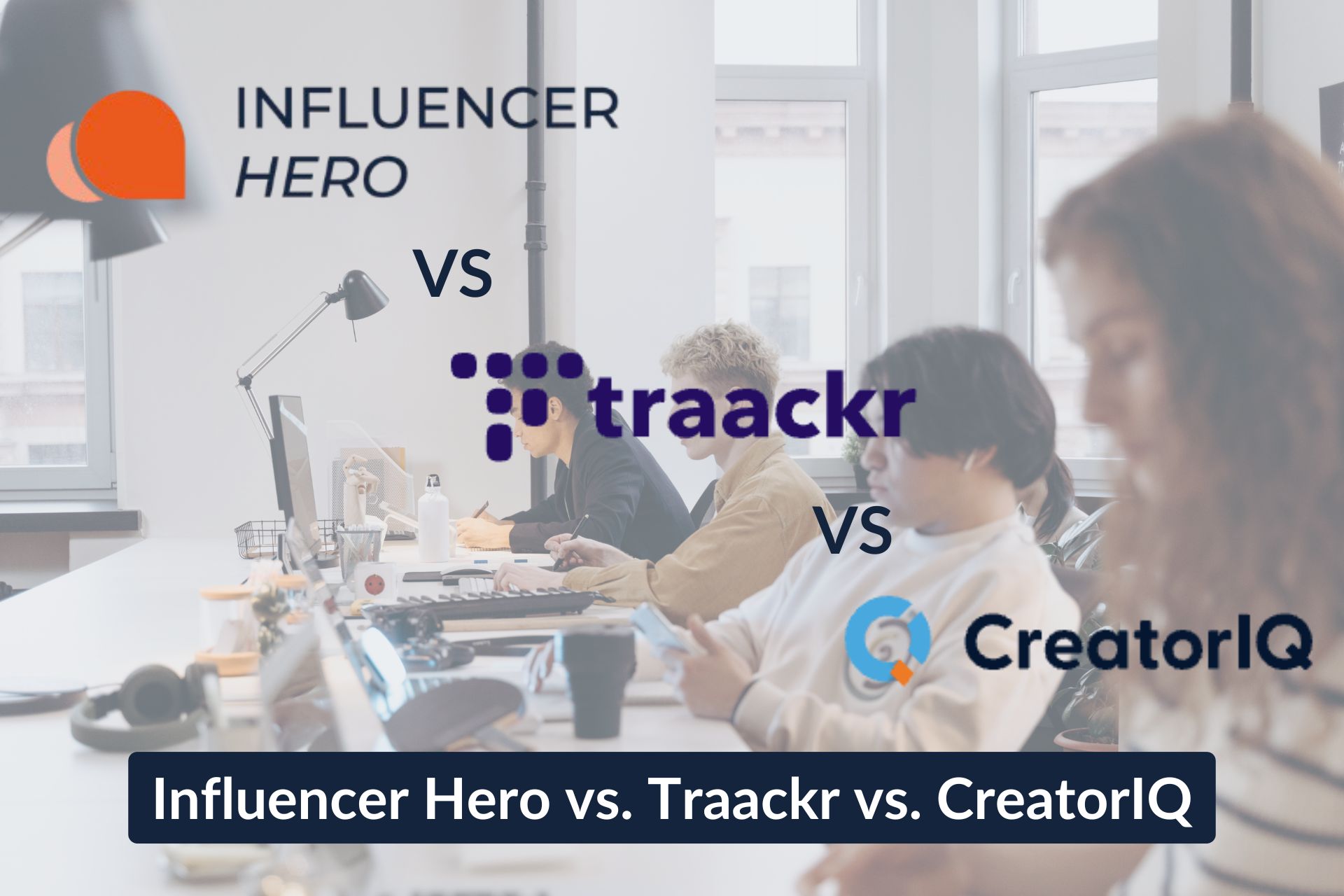Influencer Marketing Campaign Template - [Free Download]
Use our free influencer marketing campaign template. To read how to set up an effective influencer marketing campaign report continue reading below.

How to Set up an influencer marketing campaign report
Launching an influencer marketing campaign is only part of the journey. The crucial chapter that follows is understanding how it all unfolded. This is where an effective campaign report steps in. Let's dive into how you can set up a report that's not just insightful but actionable too.
1. Objective Alignment & KPIs
Kick off with a clear statement of what you aimed to achieve with the influencer campaign. Whether it was about boosting brand visibility, engagement, or driving direct sales, outline these objectives alongside the KPIs like reach, engagement rate, and conversion rates. This sets a clear foundation for evaluating success.
2. Campaign Snapshot
Provide an overview of the campaign - the concept, the influencers you teamed up with, the content crafted, and where it all went live. This section offers a quick recap of the strategy and execution, giving stakeholders a comprehensive look at the campaign's scope.
3. Influencer Performance Metrics
The meat of your report lies in analyzing how each influencer moved the needle on your campaign's objectives. Influncer Marketing software like Influencer Hero can help to gather detailed data on reach, engagement, and other relevant metrics. A side-by-side comparison can highlight top performers and areas for improvement.
4. Budget and ROI
Open the financial books to review the campaign's budget, how it was distributed among influencers, and the overall return on investment. This is especially critical for e-commerce brands tracking direct sales to evaluate which partnerships were most profitable.
5. Audience Insights
Dig into the engagement data to extract audience demographics and behavioral insights. Understand which influencer's audience engaged the most and why. These findings are invaluable for fine-tuning your targeting in future campaigns.
6. Learnings and Recommendations
No campaign is without its lessons. Identify what worked well and what didn’t, and why. This reflective section is key to evolving your influencer marketing strategy, providing a clear direction for future campaigns based on solid evidence and insights.
7. Visualize Success
Incorporate visuals—graphics, charts, and snapshots of influencer content. Visual aids not only break up the monotony of data but also offer a more engaging way to present achievements and areas for improvement.
Conclusion
An effective influencer marketing campaign report goes beyond just tallying up the numbers. It’s about laying out a pathway to refine and perfect your influencer collaborations. With the right insights, drawn from a detailed post-campaign analysis using tools like Influencer Hero, you're well-equipped to optimize future initiatives for even greater success.

Ready to 10X your ROAS?
Book a Demo today!
Join 250+ brands & 50+ agencies. We help small businesses which are just starting out all the way to publicly traded companies working with Clients like Disney, TOYOTA and Samsung.
FAQ & Competitor Comparison
An effective influencer marketing campaign report should include a variety of metrics that reflect both the reach and engagement of your campaign. Key metrics to include are:
- Reach and Impressions: How many people potentially saw the content.
- Engagement Rate: The percentage of the audience that interacted with the content through likes, comments, shares, etc.
- Click-Through Rate (CTR): The percentage of viewers who clicked on any links associated with the content.
- Conversion Rate: How many of those clicks turned into a desired action, such as a sale or a subscription.
- Return on Investment (ROI): A calculation of the financial return compared to the amount spent on the campaign.
- Audience Growth: Any increase in the brand's own social media followers or subscriber base as a result of the campaign.
The frequency of analysis and reporting depends on the length and type of your influencer marketing campaign. For short-term campaigns, a report at the conclusion detailing overall performance is common. For ongoing or long-term campaigns, monthly or quarterly reports are beneficial to adjust strategies as needed. It's also useful to perform a real-time monitoring to make agile decisions during the campaign.
To measure ROI, start by calculating the total cost of your campaign, including payments to influencers, product cost and shipping. Then, measure the total revenue generated from the campaign. The simplest formula is:[ROI = Revenue / Campaign Cost. This will give you a multiple which is used to evaluate performance. E.g. your total revenue generated from your campaign is $660K the total accumulated cost was $110K. Your ROI in this example is: 6X ($660K / 110K). For campaigns focused on metrics other than direct sales, assign value to KPIs like engagement rate or new followers to estimate ROI. Earned Media Value is also a method which is frequently used to evalulate the effectiveness of a campaign. By using Influencer Marketing Platforms like Influencer Hero you can directly access your campaign reporting and ROI metrics.
Influencer Hero is designed specifically for managing influencer marketing campaigns, including features for tracking performance and compiling digital reports. Other platforms such as Hootsuite, BuzzSumo, and Google Analytics can complement these efforts by providing additional metrics and insights, especially for tracking website traffic and conversions.
Ensuring data accuracy starts with choosing reliable tools and platforms that offer transparent and comprehensive data tracking. Regularly communicate with your influencers to get their reports and cross-verify them with your own tracking. Setting clear KPIs from the start and using UTM parameters for tracking specific links and conversions can also improve the accuracy of your campaign data.
.png)
Most Popular Blogs





















.png)










.png)












